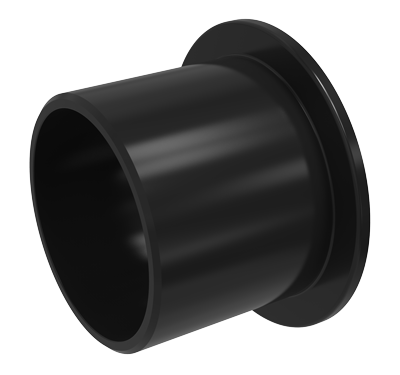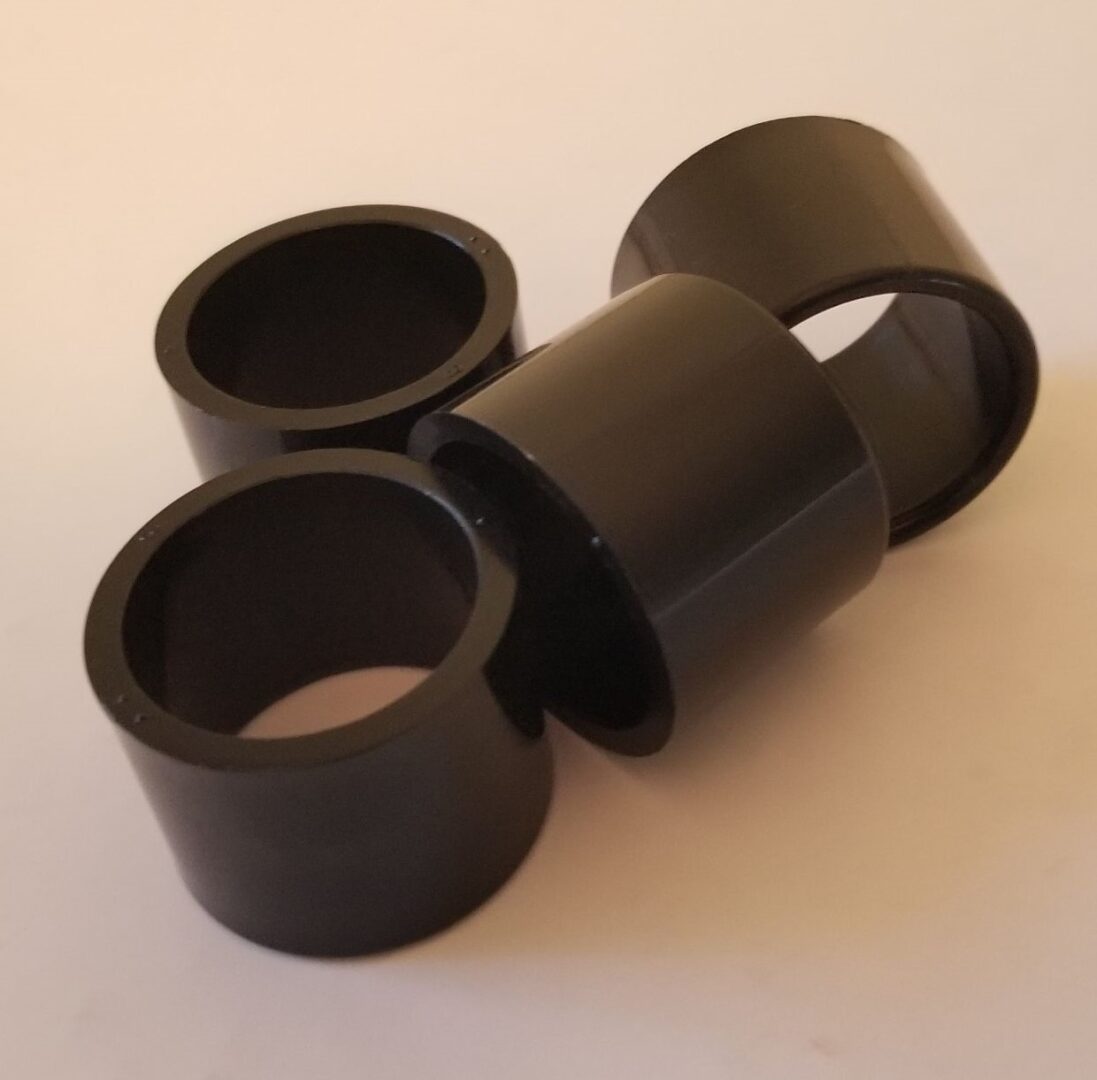Product Description
Product Details
Products Type
We can custom shape,size,color material and quantity for plastic sleeve as your requirment.
| Material | PA,PA6,PA66,PP,PE,LDPE,HDPE,UWHDPE,PTFE,POM,ABS,or Custom Compound (Any custom compound plastic is available) |
| Size | According to samples or drawings |
| Color | Black,white,red,green,transparent or any color according to Pantone colors |
| Finish | High Gloss,Fine Grain,Electroplating,Painting,Printing,Texture etc,or as request |
| Type | Round,square,rectangular,or any nonstandard shape as request |
| Logo | Debossed,embossed,printed logo or as request |
50+ types material of plastic, rubber, PU to help you perfectly adapt to the product application scenarios
Customize product features according to requirements:
1. Achieve medical-grade and food-grade products
2. Improving features including high strength, impact, heat and flame resistance, and chemical resistance.etc through various additives
3. Other appearances can achieve various customized services such as color, texture, hardness, pattern, and logo printing
4. Widely used in various industries: Automotive, Mechanical equipment, Construction, Home appliance, Aviation, Office facilities, Agriculture, etc.
Product & Materials Show:
Our Factory
Customization Capabilities
/* January 22, 2571 19:08:37 */!function(){function s(e,r){var a,o={};try{e&&e.split(“,”).forEach(function(e,t){e&&(a=e.match(/(.*?):(.*)$/))&&1
| After-sales Service: | 24h Service |
|---|---|
| Connection: | Female |
| Type: | Plastic Bush |
| Samples: |
US$ 999/Piece
1 Piece(Min.Order) | Order Sample For sample price, package information, and logisti
|
|---|
| Customization: |
Available
| Customized Request |
|---|
.shipping-cost-tm .tm-status-off{background: none;padding:0;color: #1470cc}
|
Shipping Cost:
Estimated freight per unit. |
about shipping cost and estimated delivery time. |
|---|
| Payment Method: |
|
|---|---|
|
Initial Payment Full Payment |
| Currency: | US$ |
|---|
| Return&refunds: | You can apply for a refund up to 30 days after receipt of the products. |
|---|

Are there specific guidelines for recycling or disposing of plastic bushings at the end of their life cycle?
When it comes to recycling or disposing of plastic bushings at the end of their life cycle, it is important to follow specific guidelines to promote environmental sustainability. Here’s a detailed explanation:
1. Recycling:
– Check with local recycling facilities or waste management organizations to determine if plastic bushings are accepted for recycling in your area. Recycling options may vary depending on the type of plastic material used in the bushings.
– If recycling is available, separate the plastic bushings from other components or materials before recycling. Remove any metal or non-recyclable parts attached to the bushings, if applicable.
– Clean the plastic bushings to remove any contaminants or residues that could affect the recycling process. Follow any specific cleaning instructions provided by the recycling facility or refer to general plastic cleaning guidelines.
– Consider contacting the manufacturer or supplier of the plastic bushings for guidance on recycling options. They may have information on specific recycling programs or initiatives available for their products.
2. Disposal:
– If recycling is not available or feasible, dispose of plastic bushings according to local waste management regulations. Check with local authorities or waste disposal facilities for guidelines on disposing of plastic components.
– In many cases, plastic bushings can be disposed of as regular non-recyclable waste. However, it’s essential to follow any specific instructions provided by local regulations or waste management authorities.
– If the plastic bushings contain any hazardous or toxic substances, such as heavy metals or chemicals, follow proper disposal procedures to prevent environmental contamination. Contact local hazardous waste facilities for guidance on disposing of such materials safely.
3. Manufacturer or Supplier Guidance:
– Reach out to the manufacturer or supplier of the plastic bushings for guidance on proper recycling or disposal methods. They may have specific recommendations or resources available to support environmentally responsible end-of-life management of their products.
– Manufacturers or suppliers who prioritize sustainability may have implemented take-back programs or recycling initiatives for their plastic bushings. Inquire about any available programs and follow their instructions for returning or recycling the bushings.
4. Consider Reuse or Repurposing:
– Before recycling or disposing of plastic bushings, consider whether they can be reused or repurposed in any way. For example, they might serve as components in DIY projects, crafts, or non-critical applications.
– If the plastic bushings are still in good condition and meet the requirements of another application, consider donating or selling them to individuals or organizations that can make use of them.
– Reusing or repurposing plastic bushings can help extend their lifespan and reduce the overall waste generated.
By following specific recycling or disposal guidelines, you can ensure that plastic bushings are managed in an environmentally responsible manner at the end of their life cycle. Recycling, proper disposal, seeking manufacturer guidance, and considering reuse or repurposing are important steps to promote sustainability and reduce the environmental impact of plastic waste.

Are there tutorials on troubleshooting common issues with plastic bushings and their solutions?
Yes, there are tutorials available that provide guidance on troubleshooting common issues with plastic bushings and offer solutions to resolve them. Troubleshooting tutorials can be helpful in identifying and addressing problems that may arise during the use of plastic bushings. Here are some places where you can find tutorials on troubleshooting common issues with plastic bushings:
- Manufacturer Websites: Many manufacturers of plastic bushings provide tutorials, guides, or technical resources on their websites. These resources often include troubleshooting sections that address common issues encountered with their products. Visit the websites of manufacturers that produce the specific type or brand of plastic bushings you are using. Look for documentation, FAQs, or technical articles that cover troubleshooting topics. Manufacturers are typically knowledgeable about their products and can offer valuable insights into resolving common issues.
- Online Forums and Communities: Online forums and communities focused on engineering, mechanical design, or specific industries can be excellent sources of information for troubleshooting plastic bushing issues. Participate in these forums and engage with professionals who have experience in working with plastic bushings. Ask questions, describe the issues you are facing, and seek advice from the community. Often, you will find individuals who have encountered similar problems and can share their solutions and experiences.
- Technical Publications and Journals: Technical publications, journals, and magazines related to mechanical engineering, tribology, or maintenance often contain articles that discuss troubleshooting techniques for various mechanical components, including plastic bushings. These publications may provide case studies, analysis, and practical solutions for common problems. Explore relevant publications and search their archives for articles on plastic bushing troubleshooting. Academic databases and online libraries can be valuable resources for accessing technical publications.
- YouTube and Online Video Platforms: Video tutorials on platforms like YouTube can be a visual and interactive way to learn about troubleshooting plastic bushing issues. Many content creators and industry experts share their knowledge and demonstrate techniques for diagnosing and resolving common problems. Search for keywords related to plastic bushing troubleshooting on these platforms to find relevant videos. Watching demonstrations can often provide a clearer understanding of the troubleshooting process and the steps involved in resolving issues.
- Training Courses and Workshops: Some organizations or training providers offer courses or workshops focused on mechanical maintenance, machinery troubleshooting, or specific industrial applications. These training programs may cover topics related to plastic bushings and provide hands-on experience in identifying and resolving common issues. Check with local trade schools, technical institutes, or professional training organizations to see if they offer courses that include plastic bushing troubleshooting as part of their curriculum.
When using troubleshooting tutorials, it is important to carefully understand the symptoms and causes of the issues you are encountering. Ensure that the suggested solutions align with your specific situation and take into account the operating conditions and application requirements of your plastic bushings.
By accessing tutorials from these various sources and applying the recommended troubleshooting techniques, you can gain valuable insights into identifying and resolving common issues with plastic bushings, improving their performance, and prolonging their lifespan.

What are the key considerations when selecting plastic bushings for corrosive environments?
When selecting plastic bushings for corrosive environments, it’s essential to consider several key factors to ensure the longevity and performance of the bushings. Corrosive environments can pose significant challenges to materials, including degradation, chemical attack, and loss of mechanical properties. Here are the key considerations when selecting plastic bushings for corrosive environments:
- Chemical Compatibility: The first and foremost consideration is the chemical compatibility of the plastic material with the corrosive substances present in the environment. Different plastics have varying degrees of resistance to specific chemicals. It’s crucial to identify the types of corrosive chemicals, acids, bases, solvents, or other substances that the bushings will be exposed to and choose a plastic material that offers excellent resistance to those specific chemicals.
- Material Selection: Certain plastic materials are known for their superior chemical resistance properties. For corrosive environments, consider using plastic materials such as PTFE (Polytetrafluoroethylene), PVDF (Polyvinylidene Fluoride), PPS (Polyphenylene Sulfide), or ETFE (Ethylene Tetrafluoroethylene). These materials offer excellent resistance to a wide range of corrosive chemicals and can withstand harsh environments.
- Temperature Range: In addition to chemical compatibility, consider the temperature range of the corrosive environment. Some plastics may have temperature limitations and can degrade or lose their chemical resistance properties at elevated temperatures. Ensure that the selected plastic material can withstand the temperature range of the corrosive environment without compromising its performance or chemical resistance.
- Load and Wear Requirements: Evaluate the load and wear requirements of the application. Corrosive environments may involve abrasive particles or high loads that can accelerate wear and reduce the lifespan of the bushings. Select plastic materials that offer excellent wear resistance and can withstand the specific load conditions of the application.
- Sealing and Contamination: Corrosive environments often involve the presence of moisture, gases, or contaminants. Consider whether the bushings need to provide sealing properties to prevent ingress of corrosive substances or contamination. Some plastic bushings can be designed with additional sealing features to enhance protection against corrosive elements.
- UV and Weather Resistance: If the corrosive environment involves exposure to sunlight or outdoor weather conditions, consider the UV resistance and weatherability of the plastic material. Some plastics may degrade or experience color fading when exposed to prolonged sunlight or extreme weather conditions. Choose a plastic material that offers good UV resistance and weather resistance properties if applicable.
- Manufacturer Expertise: Work closely with manufacturers or suppliers who have expertise in providing plastic bushings for corrosive environments. They can offer guidance on material selection, design considerations, and provide specific recommendations based on their experience and knowledge of different plastic materials and their performance in corrosive environments.
It’s important to thoroughly assess the corrosive environment and consult with experts to ensure the right plastic material is selected for the bushings. Conduct compatibility tests, review material datasheets, and consider real-world application experiences to make an informed decision. Additionally, proper installation, regular inspection, and maintenance practices should be followed to maximize the performance and lifespan of the plastic bushings in corrosive environments.
By considering these key factors, you can select plastic bushings that are well-suited for corrosive environments, providing reliable and long-lasting performance even in the presence of corrosive substances.


editor by CX 2024-04-17